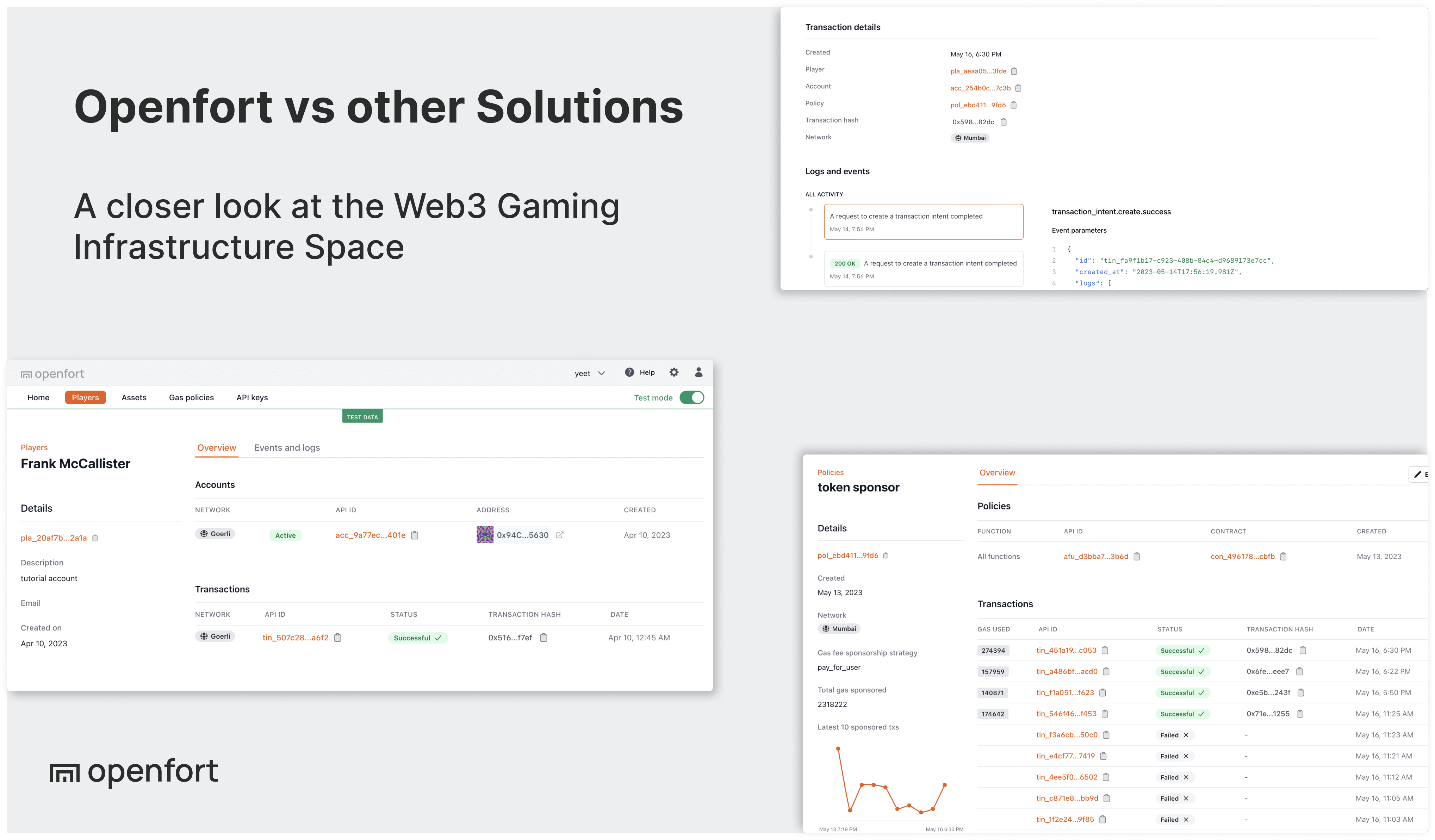
In 2026, the "wallet-as-a-service" landscape has matured. It's no longer just about "who has the best React hook." The decision now hinges on your specific business model, transaction volume, and security requirements.
This guide breaks down the top infrastructure providers by use case, helping you choose the right tool for your specific stack. If you want to go deeper into each provider alternative:
1. Agentic Finance
Profile: AI Agents, Automated Portfolio Managers, Background Execution.
The Challenge: You need "headless" infrastructure where an AI or script can sign transactions without human intervention, often requiring high-throughput and programmable permissions.
Top 3 Contenders
- Turnkey: The primitive for programmable signing.
- Openfort: The orchestration layer for agent policies.
- Privy: The headless wallet for agent policies.
Feature Match
| Feature | Turnkey | Openfort | Privy |
|---|---|---|---|
| Key Tech | TEE (Enclaves) | Backend wallet | MPC |
| Policy Engine | ✅ Transaction-based | ✅ Granular / Contract | ✅ Transaction-based |
| Signer Type | API / Headless | API / Headless | API / Headless |
| Latency | Sub-50ms | ~100ms | ~200ms |
| Pricing | Signature-based | Transaction-based | Monthly SaaS |
Why Openfort? While Turnkey provides the raw speed, Openfort allows you to orchestrate multiple signers and apply complex "spending limits" (e.g., "Max 1 ETH/day") that are critical for keeping autonomous agents safe.
2. Fintech and Stablecoins
Profile: Neobanks, Cross-border payments, Yield apps.
The Challenge: You are dealing with high-value assets and regulatory scrutiny. You need institutional-grade security (MPC) and strict controls over user funds, often hiding the "crypto" entirely.
Top 3 Contenders
- DFNS: Institutional MPC.
- Openfort: Compliance-ready infrastructure.
- Privy: Enterprise-grade compliance (SOC2).
Feature Match
| Feature | DFNS | Openfort | Privy |
|---|---|---|---|
| Custody Model | Decentralized MPC | Self-custody / Hybrid | Delegated HSM/MPC |
| Compliance | SOC2 Type II | SOC2 Type II | SOC2 Type II |
| Gas Sponsorship | ❌ (Need 3rd party) | ✅ Native | ✅ Native |
| Auth Methods | API-driven | Any OIDC / Custom | Social / Email |
| Recovery | Multi-party | Social / Cloud | Email / SMS |
Why Openfort? Openfort bridges the gap between "secure custody" and "user experience." Unlike Dfns which is pure infrastructure, Openfort gives you the gas sponsorship and account abstraction features needed to make a crypto app feel like a fintech app.
3. DeFi and Trading
Profile: DEXs, Aggregators, Pro Trading Terminals.
The Challenge: Speed and Security. Users are signing high-value transactions frequently. You need a balance of seamless connection (WalletConnect/Injected) and powerful embedded options for new users.
Top 3 Contenders
- Dynamic: The best multi-chain wallet adapter.
- Turnkey: For sub-millisecond signing latency.
- Openfort: For advanced trading policies.
Feature Match
| Feature | Dynamic | Turnkey | Openfort |
|---|---|---|---|
| Wallet Aggregation | ✅ Best-in-class | ❌ | ❌ |
| Multi-chain | EVM, SVM, Cosmos | EVM, SVM | EVM, SVM |
| Embedded Wallets | ✅ | ✅ | ✅ |
| Session Keys | ❌ | ✅ | ✅ |
| Pricing | MAU-based | Usage-based | Usage-based |
Why Openfort? If you are building a pro trading terminal that requires Session Keys (so users don't sign every trade) or automated "Stop Loss" execution, Openfort's policy engine enables features that Dynamic's UI-focused adapter cannot handle.
4. Consumer and Mobile Apps
Profile: Social, Rewards, Prediction Markets. High MAU, Low Transaction Value.
The Challenge: Onboarding friction and Cost. You need social login (Google/Apple) and a pricing model that doesn't punish you for having 100k free users.
Top 3 Contenders
- Thirdweb: The conversion king.
- Openfort: The scalable alternative.
- Web3Auth: The budget-friendly auth.
Feature Match
| Feature | Thirdweb | Openfort | Web3Auth |
|---|---|---|---|
| Conversion UX | ⭐⭐⭐⭐ | ⭐⭐⭐⭐ | ⭐⭐⭐ |
| Social Login | ✅ Native | ✅ Any OIDC | ✅ Extensive |
| Mobile SDK | RN, Swift, Flutter | RN, Swift | RN, Swift |
| Cost (10k MAU) | ~$200/mo | Usage-based (Low) | ~$399/mo |
| White-label | ✅ | ✅ | ✅ |
Why Openfort? Openfort is the choice for scale. When you hit 100k users, Privy's bill can become prohibitive. Openfort's usage-based model ensures you only pay for users who actually transact, not just those who sign up.
5. Gaming
Profile: RPGs, TCGs, Fully Onchain Games.
The Challenge: Gameplay interruption. You cannot pop up a wallet signature request every time a player moves or attacks. You need Session Keys.
Top 3 Contenders
- Sequence: The all-in-one gaming stack.
- Openfort: The headless gaming wallet.
- Thirdweb: The ecosystem play.
Feature Match
| Feature | Sequence | Openfort | Thirdweb |
|---|---|---|---|
| Game Engine SDK | Unity / Unreal | Unity | Unity / Unreal |
| Session Keys | ✅ | ✅ (Granular) | ✅ |
| Marketplace | ✅ Included | ❌ | ✅ Included |
| Smart Accounts | Native | Native (ERC-4337) | Integrated |
| Ecosystem | Gaming-focused | Agnostic | Full Stack |
Why Openfort? Choose Openfort if you already have a game backend and just need the "wallet engine." Unlike Sequence or Thirdweb which try to be your entire backend, Openfort plugs into your existing infrastructure to handle the onchain complexity.